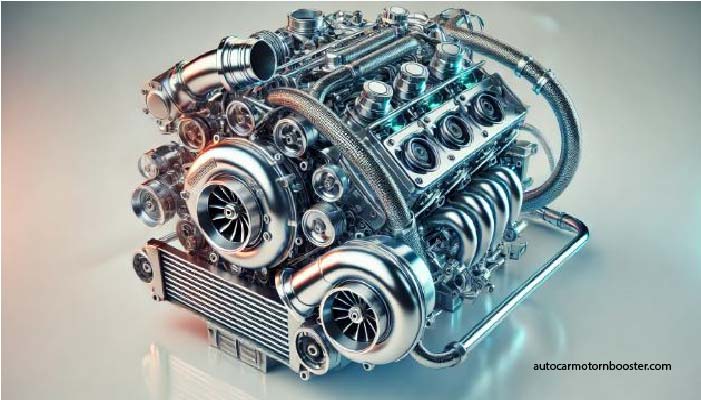Boosted engines, equipped with turbochargers or superchargers, have become increasingly popular in the automotive world. They offer impressive power gains and efficiency. However, a range of myths often mislead car enthusiasts and professionals alike. In this article, we will explore and debunk some of the most common myths about boosted engines, providing clarity for enthusiasts and professionals.
What is a Boosted Engine?
A boosted engine refers to an engine equipped with a turbocharger or supercharger to increase air intake, resulting in higher power output. These engines have become a standard in performance and even in some economy vehicles due to their ability to provide better power-to-weight ratios and fuel efficiency.
Myth 1: Boosted Engines Are Only for Racing Cars
One of the most common misconceptions is that boosted engines are only suitable for high-performance or racing vehicles. While they are indeed popular in the racing world, modern automotive engineering has made turbocharged and supercharged engines more versatile.
Boosted engines are now widely used in everyday vehicles to improve fuel economy. For instance, many family sedans and SUVs feature small, turbocharged engines that provide a balance of efficiency and performance.
Myth 2: Boosted Engines Are Unreliable
The myth of unreliability comes from the early days of turbocharging when designs were less refined. Modern turbocharged engines are manufactured with advanced materials and precise engineering, ensuring reliability when properly maintained.
To ensure longevity, owners should:
- Use high-quality engine oil and replace it regularly.
- Monitor boost pressure levels.
- Perform routine maintenance, such as checking for boost leaks.
Reliability issues often arise when engines are poorly maintained or excessively modified beyond their design limits.
Myth 3: Boosted Engines Are Fuel Guzzlers
Contrary to popular belief, boosted engines can actually improve fuel efficiency. Turbochargers allow smaller engines to produce the same power as larger engines, reducing fuel consumption during regular driving.
For example, a 1.5L turbocharged engine can deliver the power of a 2.5L naturally aspirated engine while consuming less fuel. However, efficiency largely depends on driving habits. Aggressive acceleration and high boost usage can indeed lead to higher fuel consumption.
Myth 4: Boosted Engines Always Overheat
The perception that boosted engines overheat stems from outdated systems without proper cooling solutions. Modern vehicles with boosted engines come equipped with advanced cooling technologies like intercoolers and high-performance radiators to manage heat efficiently.
Overheating occurs mainly due to:
- Poor maintenance of the cooling system.
- Aftermarket modifications that neglect proper thermal management.
- Excessive abuse of the engine during extreme conditions.
By ensuring regular coolant changes and maintaining airflow through intercoolers, overheating is easily preventable.
Myth 5: Boosted Engines Require Expensive Maintenance
Another common myth is that boosted engines are expensive to maintain. While some specific parts like turbochargers or superchargers can be costly to replace, regular maintenance isn’t significantly different from naturally aspirated engines.
To keep costs in check:
- Use manufacturer-recommended fluids.
- Replace air filters regularly to prevent debris from entering the turbo.
- Inspect vacuum lines and boost hoses for wear.
Routine care ensures long-term performance and keeps costs minimal.
Advantages of Boosted Engines
To better understand the benefits of boosted engines, here are some key points:
- Increased Power: Turbochargers amplify horsepower without increasing engine size.
- Better Efficiency: Smaller engines with turbos use less fuel for comparable power output.
- Eco-Friendliness: Many turbocharged engines reduce carbon emissions by optimizing combustion.
How to Keep Your Boosted Engine Performing at Its Best
- Regularly inspect for boost leaks.
- Keep your turbo system clean and free from debris.
- Monitor the air-to-fuel ratio to avoid running too lean or rich.
- Use premium-quality fuel when required.
- Allow the engine to cool down after intense driving to prolong the life of the turbo.
Conclusion
Boosted engines are a testament to modern engineering, offering an incredible balance between performance and efficiency. While myths persist, understanding the truth behind these misconceptions can empower car owners to appreciate and maintain their turbocharged or supercharged vehicles. With proper care, boosted engines provide an exceptional driving experience and long-term reliability.
FAQs
- What is the primary purpose of a turbocharger in a boosted engine?
A turbocharger increases the air intake in the engine, allowing for better combustion and more power output. - Do boosted engines require premium fuel?
Not all boosted engines require premium fuel. It depends on the engine design and manufacturer specifications. - Can a turbocharged engine be as fuel-efficient as a regular engine?
Yes, when driven moderately, turbocharged engines can match or even surpass the fuel efficiency of naturally aspirated engines. - How often should I replace the turbocharger in my car?
With proper maintenance, a turbocharger can last the lifetime of the vehicle. Routine checks are crucial to prevent premature wear. - Is it necessary to warm up and cool down a boosted engine?
Yes, warming up allows oil to circulate, and cooling down prevents heat damage to the turbo system.
If Like This Article Visit Our Website. Collect From Wekiapedia
